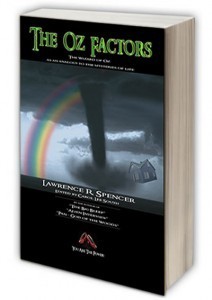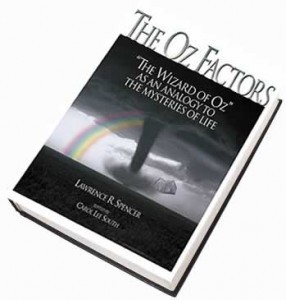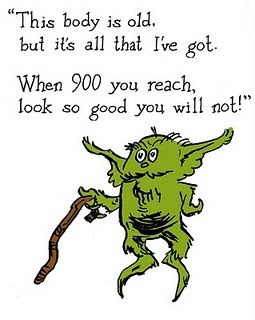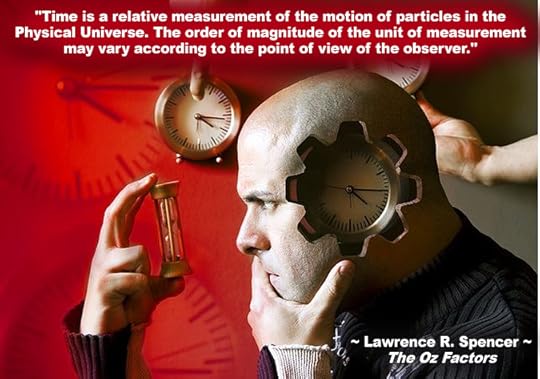Lawrence R. Spencer's Blog, page 203
December 28, 2020
EVERYTHING LOGIC
Republished by Blog Post Promoter
A–“WHICH IS THE WAY BACK TO KANSAS?”
“I’d give anything to get out of Oz altogether, but which is the way back to Kansas? I can’t go the way I came.”–Dorothy
“The only person who might know would be the great and wonderful Wizard of Oz himself. He lives in the Emerald City and that’s a long journey from here. Did you bring your broomstick with you?”–Glinda, the Good Witch of the North
“No, I’m afraid I didn’t.”–Dorothy
“Well then, you’ll have to walk. It’s always best to start at the beginning and all you do is follow the Yellow Brick Road.”–Glinda in ‘The Wizard of Oz’
One of the primordial questions Dorothy was trying to answer in ‘The Wizard of Oz’ was, “which is the way back to Kansas?”
Trying to figure out the answers to the mysteries of life here on planet Earth is even harder than Dorothy trying to get back to Kansas–none of us have a broomstick to ride, we don’t have a good witch to ask for directions and there is no Yellow Brick Road to follow. So, we’re stuck here having to figure it out for ourselves, logically, using the information we have in our environment.
To begin at the beginning, the Land of Oz is a type of Universe. According to Webster’s Dictionary, a universe is defined as: “an area, province or sphere, as of thought or activity, regarded as a distinct, comprehensive system or world.”
The physical reality we all share on Earth and everything throughout the surrounding space is called the Physical Universe (PU).
On the other side of reality is your own imagination, your personal perceptions, viewpoints, dreams, hopes, desires, and creations, which comprise Your Own Universe (YOU).
The Land of Oz can be considered to be a Universe dreamed up by Dorothy, as conceived in the mind of L Frank Baum, the author of the book. (It has been speculated that the author created the “Land of Oz” after glancing at his file cabinet. The two file drawers were labeled “A-N” and “O-Z”. Dorothy could just as easily have been transported by the author’s pen into the imaginary “Land of AN”.)
In the movie version of the story, Dorothy creates the Land of Oz in a dream, induced by a knock on the head, using remnants of Kansas in the physical universe mixed together with creations from her own universe–which, for Dorothy, existed over the rainbow in the Land of Oz.
Every Universe seems to be made up of its own, peculiar set of Laws. The PHYSICAL UNIVERSE, for example, is built on a set of agreed upon Laws. A few examples of these Laws are:
The Law of Motion: “For every action, there is an equal and opposite reaction.”
The Food Chain Law: “In order for one life organism to live, another life organism must die.”
The Law of Gravity: “Whatever goes up, must come down.”
The Law of Time: “Time marches on.”
Most of us take the Laws of the Physical Universe for granted because everyone seems to agree with them. However, such laws leave a lot to be desired when compared to the Laws of a Universe we might create for ourselves!
In YOUR OWN UNIVERSE you can create any set of Laws, or have no Laws at all. You can make them, change them or break them. The Laws of YOUR OWN UNIVERSE can be anything or nothing, limited only by your imagination.
In YOUR OWN UNIVERSE, everything you wish comes true, because you are the “wizard” of YOUR OWN UNIVERSE!
In Dorothy’s universe, Scarecrows and trees can talk; witches can be beautiful and fly in magic bubbles; Munchkin girls join the “Lullaby League” and Munchkin boys have a “Lollipop Guild”; horses can change their color; and, Dorothy can dye her eyes to match her gown.
Dorothy’s first awareness of the particular universe she calls the Land of Oz is the realization that she is definitely NOT in Kansas. When she opens the door to her farmhouse, which has just crash-landed in Oz, Dorothy compares her past experience in Kansas with her present experience in Munchkinland. The Technicolor flowers, a good witch in a flying bubble, all the little brightly dressed people, a yellow brick road, etc, are definitely NOT similar to anything she has ever seen in Kansas.
The Land of Oz is an example of what Earth scientists would call an anomaly. For Dorothy, the anomaly is a departure from the usual arrangement of things as compared to her past experiences. In the universe of Oz, everything is so completely different from the universe Dorothy is familiar with in Kansas that she thinks she is lost.
How do you find the way back home when you are lost?
One way is to ask someone for directions. Of course, if you’ve ever been sent on a wild goose chase by a stranger, the experience taught you that it is a good idea to be somewhat selective as to whom you ask for directions. So, how do you know who is a reliable source of directions or information?
Perhaps it would be a good idea to find out something about the person from whom you are asking directions before you act upon what they tell you. Right? (Or, is it left?)
In our example, should Dorothy be asking for directions back to Kansas from the local natives, the Munchkins?
The main reason one would ask a local resident for directions is that one makes the assumption, otherwise known as an hypothesis (which is the first step in creating any scientific theory), that someone who lives in the area will be a reliable source of information and will give correct directions.
Well, in Dorothy’s case, the Munchkins have lots of familiarity with the Land of Oz, but they have no familiarity with Kansas. Fortunately for Dorothy, they are honest enough to tell her that they don’t have a clue where Kansas is, and they pass the buck to the Wizard of Oz, who they believe knows everything. And, based on their familiarity with the Yellow Brick Road and Munchkinland, they are certain that it leads to where the Great Oz lives.
Most would agree that a certainty is better than an assumption. When one has no familiarity based on personal experience or observation, it is best not to assume that one knows the correct directions. So, one asks for information from someone one believe knows–like a scientist, for example–who is supposed to be familiar with the area or subject in question.
Do the local Munchkins or local scientists of Oz give Dorothy the correct directions to help her get back to Kansas?
When Dorothy crash-landed her house in Munchkin City, the Munchkins cowered under the bushes and flowers in terror of retribution for the death of the Wicked Witch of the East from her mean, nasty, ugly sister, the Wicked Witch of the West.
Their benevolent, all-powerful protector, Glinda, the Good Witch of the North, who the Munchkins trust implicitly, is not much help in solving Dorothy’s problem, either. To begin with, Glinda does not have all the information regarding the situation, because she was not even there when Dorothy crashed her house into Munchkin City and inadvertently killed a wicked witch.
Undaunted by her lack of factual information, the first thing Glinda does after coaxing the Munchkins out from their hiding places, is to sing them a song about her assumption, or hypothesis, regarding Dorothy’s crash-landing. She sings: “Come out, come out, wherever you are, and meet the young lady who fell from a star. She fell from the sky, she fell very far, and ‘Kansas’ she says, is the name of the star.”
So, where did Glinda get the idea that Dorothy came from a star? Dorothy never said that she came from a star! But, somehow this all seems very logical to the Munchkins. Even Dorothy doesn’t object to Glinda’s false statement!
In our analogy, Glinda’s assumption that Dorothy fell from a star could be called a scientific theory. The theory proposed by the Good Witch of the North is that Kansas is a star! This theory is based on an assumption derived from an apparent anomaly as measured against her own personal experience and by information received from the Munchkins who are supposed to be a reliable source, but, who did not actually see the house crash because they were all in hiding. In truth, none of them have any familiarity with Kansas or cyclones or farm houses or dogs or little girls, either!
To complicate matters further, Glinda has to put on the appearance that she knows what she’s talking about in front of all her Munchkins followers, even though she is really just making a wild guess. After all, she has a very good job being the protector of the Munchkins, who appear to be utterly defenseless against their enemies, the Wicked Witch sisters. Anyway, Glinda is a good witch, which means she is probably really trying to help, so, they all believe her scientific theory that Dorothy has fallen from a star.
In their cute little minds, the Munchkins have accepted, without question, the logic, which underlies the assumption that is the basis of Glinda’s scientific theory:
SKY equals VERY FAR equals STAR equals KANSAS.
This kind of reasoning process could be called “Everything Logic”; i.e., Everything Equals Everything. This sort of logic might also be the definition of stupidity.
Example: If KANSAS equaled SKY equaled STAR, one could theoretically gaze up into the heavenly firmament to watch Kansas cattle grazing on the twinkling prairies in the stars above.
Unfortunately, much of what we call “science” on planet Earth is based on “Everything Logic”.”
— Excerpted from THE OZ FACTORS, by Lawrence R. Spencer
EPHEMERAL MAN
Republished by Blog Post Promoter
 “Think continually how many doctors have died who often knit their brows over their dying patients, how many astrologers who had foretold the deaths of others as a matter of importance, how many philosophers who had discoursed at great length on death and immortality, how many heroic warriors who had killed many men, how many tyrants who had used their power over men’s lives with terrible brutality, as if immortal themselves. How often have no whole cities died, if I may use the phrase, Helike, Pompeii, Herculaneum, and innumerable others? Go over in your mind the dead whom you have known, one after the other: one paid the last rites to a friend and was himself laid out for burial by a third, who also died; and all in a short time. Altogether, human affairs must be regarded as ephemeral, and of little worth: yesterday sperm, tomorrow a mummy or ashes.”
“Think continually how many doctors have died who often knit their brows over their dying patients, how many astrologers who had foretold the deaths of others as a matter of importance, how many philosophers who had discoursed at great length on death and immortality, how many heroic warriors who had killed many men, how many tyrants who had used their power over men’s lives with terrible brutality, as if immortal themselves. How often have no whole cities died, if I may use the phrase, Helike, Pompeii, Herculaneum, and innumerable others? Go over in your mind the dead whom you have known, one after the other: one paid the last rites to a friend and was himself laid out for burial by a third, who also died; and all in a short time. Altogether, human affairs must be regarded as ephemeral, and of little worth: yesterday sperm, tomorrow a mummy or ashes.”
Marcus Aurelius Antoninus, The Meditations
Marcus Aurelius Antoninus — 26 April 121 – 17 March 180 AD) was Roman Emperor from 161 to 180. He ruled with Lucius Verus as co-emperor from 161 until Verus’ death in 169. He was the last of the Five Good Emperors, and is also considered one of the most important Stoic philosophers.
During his reign, the Empire defeated a revitalized Parthian Empire in the East: Aurelius’ general Avidius Cassius sacked the capital Ctesiphon in 164. In central Europe, Aurelius fought the Marcomanni, Quadi, and Sarmatians with success during the Marcomannic Wars, although the threat of the Germanic tribes began to represent a troubling reality for the Empire. A revolt in the East led by Avidius Cassius failed to gain momentum and was suppressed immediately.
Marcus Aurelius’ Stoic tome Meditations, written in Greek while on campaign between 170 and 180, is still revered as a literary monument to a philosophy of service and duty, describing how to find and preserve equanimity in the midst of conflict by following nature as a source of guidance and inspiration.
December 27, 2020
DON’T TOUCH MY STUFF!
Republished by Blog Post Promoter
(Excerpt from the book 1,001 THINGS TO DO WHILE YOU’RE DEAD: A Dead Person’s Guide To Living )
“VISIT A MATERNITY WARD.
If you finally change your mind and decide to go back to being a baby again, your best chances of getting a new baby body are at a maternity ward. Find a hospital building. Locate the newborn baby section. You may have to wait for a body that is not already occupied, or one that isn’t quite ready to hatch yet. This could take a while.
Or, you may be able to get one sooner by fighting off all the other disembodies beings who are hanging around the hospital trying to get a body for themselves. Why do you think babies cry and sleep so some much when they’re born? They had to kick a lot of disembodied asses to get a body. That’s why they are usually tired and cranky and have bruises, messy hair and blotchy skin!
REINCARNATE YOURSELF AS AN ANIMAL.
Theoretically, you can go back to Earth and inhabit the body of a human being. And, just as theoretically, you can go back to Earth an inhabit the body of a different kind of life form. This could be an interesting interlude.
Many small animals don’t live a long time, like rats and small birds. So, you might enjoy a short excursion as a creature of some kind. There are millions of species to choose from on land, in the air and in the oceans.
For convenience, here is a list of the Top 10 longest lived animals: rabbits – 28 years, bird-eating spiders – 28 years, dog – 29 years, cats – 38 years, goldfish – 43 years, horses – 62 years, birds – 60 to 118 years, elephants – 86 years, Koi fish – 226 years, Tortoise – 255 years!
If you decide to inhabit the body of a different life form you might want to consider their life style and eating habits before you choose.
For example, cats eat rats and mice. That could take some getting used to…. Some birds eat seeds, raw fish, frogs, bugs, garbage and road kill.
Silverback gorillas eat vegetation and they are strong enough to tear a man’s arms and legs off easily. Whales eat plankton, krill, squid, octopus and jellyfish. Dolphins are a fun species. They eat whole, raw fish – guts and all.
Anyway, there are a lot of options. Of course, human beings have been known to eat just about everything under the sun – including ALL of the items AND the animals listed above.”
PREVIEW and BUY THE BOOK …BEFORE IT’S TOO LATE! 
![1001 Things to Do While You're Dead | [Lawrence Spencer]](https://i.gr-assets.com/images/S/compressed.photo.goodreads.com/hostedimages/1381985472i/5512720.jpg)
AUDIOBOOK — (UNABRIDGED) by Lawrence Spencer, Narrated by Kendra Hoffman
FORGET EVERYTHING YOU KNOW
Republished by Blog Post Promoter
Jacob Barnett is a boy genius who was diagnosed with Autism. He has an IQ higher than Einstein. However, it’s not the Autism or the Einstein that is really amazing…. It’s what he has to SAY about creative thinking that I think is important.
Read the article link below. Watch Jacobs presentation on TED Talks.
STOP LEARNING. START THINKING. CREATE!
Boy genius diagnosed with Autism has IQ higher than Einstein
December 26, 2020
SMOKE HAIKU
Republished by Blog Post Promoter
SMOKE HAIKU by Lawrence R. Spencer
Wisdom is like smoke
it can’t be controlled by man
Truth lives in the Soul
December 25, 2020
ESCHER HAIKU
Republished by Blog Post Promoter
ESCHER HAIKU by Lawrence R. Spencer
The right hand draws the left
Draws the right drawing the left
Drawing the left hand.
_____________________________
Visit the Official M.C. Escher website — http://www.mcescher.com/
Maurits Cornelis Escher (17 June 1898 – 27 March 1972), usually referred to as M. C. Escher, was a Dutch graphic artist. He is known for his often mathematically inspired woodcuts, lithographs, and mezzotints. These feature impossible constructions, explorations of infinity, architecture, and tessellations.
COSMIC CLOCK
Republished by Blog Post Promoter
“Time is a subject that is far from absolute. The measurement of time is the activity of monitoring the movement of matter or energy particles through space. In order to establish the passage of time, one must establish an agreed-upon reference point for beginning the period of time to be measured. Then, the increments of measurement must be uniformly consistent throughout the period of time being quantified. This set of qualifying factors, however, applies only to the Physical Universe.
Does time (as the Munchkins would say) morally, ethically, spiritually, physically, positively, absolutely, undeniably and reliably actually, really exist?
Imagine that you are completely isolated, unable to observe any physical motion whatsoever–no sun, moon and stars, night or day. If you were isolated from your own body such that you could not detect any breathing rhythm or heartbeat or cellular motion of any kind to use as a reference point, would time exist?
People who have been locked in solitary confinement, whether in a prison or in an isolation chamber, have experienced the phenomenon of “no time”.
Since many people seem to have an innate, built-in time sense, or a “biological clock”, there may be a subjective awareness of time. But, even so, time is determined by measuring some motion in the physical universe. 
How can the dates of something for which you have no starting point be measured? How can the age of our planet, our galaxy, or the entire physical universe be determined? How can the age of something which does not exist in the physical universe, such as a spirit, be calculated?
Logically, an arbitrary unit of measurement must be chosen. Then a particle or object which can move through space must exist. This particle would have to travel at a uniformly predictable rate of speed. The unit of measurement would depend on the magnitude or size of the motion of the particle relative to a fixed point in space, or a fixed point of view.
Here is a simple example: let’s imagine a theoretical COSMIC TIME CLOCK in which ONE SECOND equals ONE EARTH YEAR.
If you counted the ticks of the second hand of this cosmic clock in “normal” time increments of 24 hour days, every day, how long would it take you to measure the recent history of planet Earth?
2 years and 22 days ago would equal the end of the Dinosaur Age (75 million BC)
1 hour, 14 minutes,6 seconds ago equals 2,450 BC– Egyptian Pharaoh Khufu
53 minutes, 36 seconds ago equals 1220 BC–Moses’ Exodus from Egypt
42 minutes 39 seconds ago equals 563 BC–Buddha is born
33 minutes 16 seconds ago equals “year zero” the calendar in use throughout most of the world, sponsored by Pope Gregory XIII in 1582
8 minutes 24 seconds ago equals 1492 AD, Columbus “discovers” America
3 minutes 40 seconds ago equals 1776 AD, the United States of America is founded
One human average lifetime (70 years) equals 1 minute, 10 seconds on the Cosmic Time Clock.
Time is a relative measurement of the motion of particles in the Physical Universe. The order of magnitude of the unit of measurement may vary according to the point of view of the observer.
To venture a guess as to the age of the physical universe, based on a supposed decay of matter is another example of “scientific theory” based on assumption and personal viewpoint.
According to some authorities, mainly from the non-physical sciences, such as philosophy, there is reason to believe that the physical universe may have existed for many trillions of years or perhaps for a nearly infinite period of time. However, since time is a relative factor, it’s importance as a tool for evaluating other information is also relative.”
— Excerpt from THE OZ FACTORS, by Lawrence R. Spencer
MEN: YOU’RE ALREADY BRILLIANT…
Republished by Blog Post Promoter











